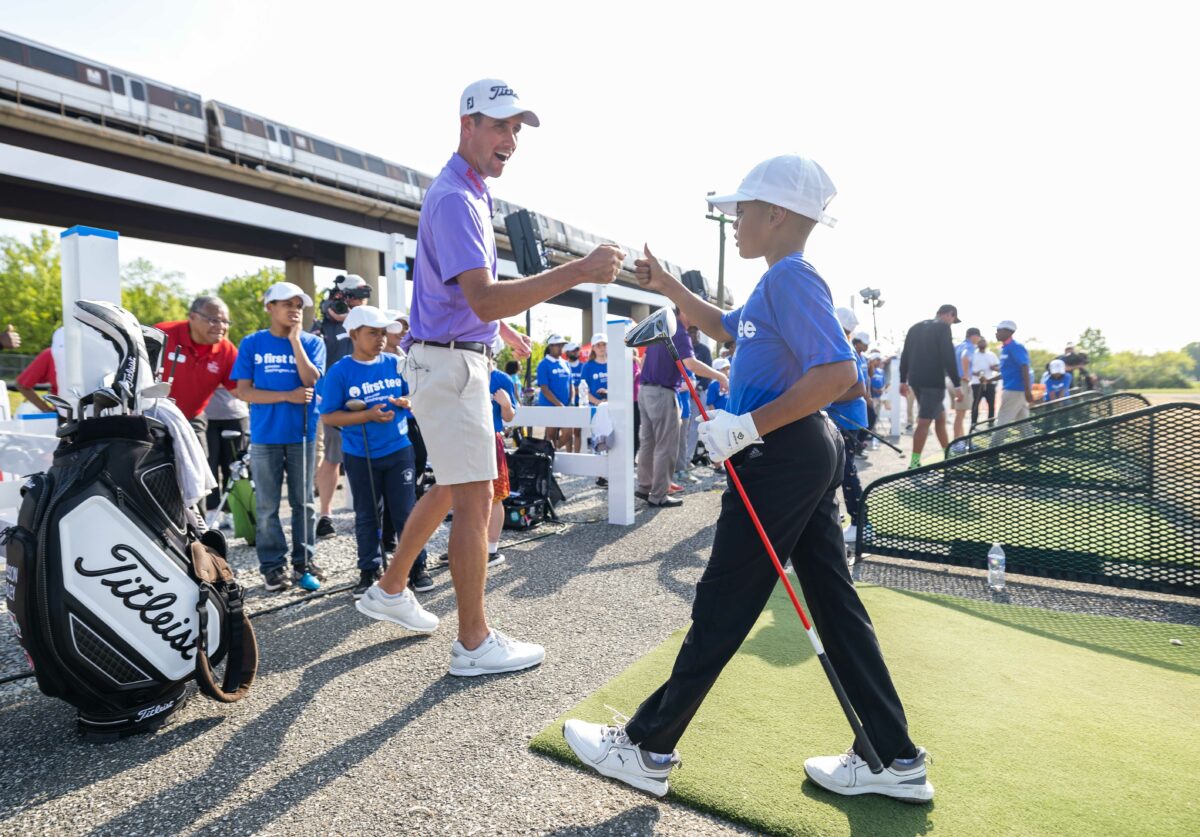WASHINGTON, D.C. — Unless you’re a fan of golf history or you’ve spent some time in our nation’s capital, chances are you’ve never heard of the Langston Golf Course.
For those unfamiliar, the public track in Northeast D.C. is named after John Mercer Langston, the first black man elected to Congress from Virginia and the first dean of the nearby Howard University School of Law, and opened its first nine holes back in 1939 (the back nine came later in 1955). Langston’s front nine were added to the National Register of Historic Places in 1991, has been a safe haven for minority golfers over the years and has played host to the likes of boxing legends Joe Louis (who played an amateur event there in the 1940s), Mike Tyson (who loved the chicken wings) and Muhammad Ali.
“His limousine pulls up, and . . . he said to me, ‘I’ve never picked up a golf club before,’ and he reached out and got my putter,” remembers David Ross, a longtime regular at the course who met Ali on the putting green. Interactions like those were par for the course.
A few more celebrities were on the course’s driving range on Tuesday as part of a Wells Fargo Championship and First Tee skills clinic for the Greater Washington, D.C. chapter that featured PGA Tour professionals Chesson Hadley, Camilo Villegas and college stars Eugenio Chacarra and Jacob Bridgeman. Mr. Langston would’ve been pleased to also see four First Tee alumni and HBCU student-athletes participating and helping the kids: Jakari Harris (Hampton University class of 2022), Lennard Long (Morehouse College class of 2019), Elijah Royal (Fisk University class of 2021) and Joia Robertson (Fisk University class of 2025).

“This place is home and has been treating me so well growing up, so just to see these kids out here has been an amazing opportunity, especially because I didn’t have this opportunity to see pros on the course so I’m glad they are able to,” said Long, who learned the game at Langston. “I wanted to be on Tour, I’m not gonna lie. But I’m happy that I’m with (the kids) and I can use all the knowledge that I’ve gained from my experiences and really give it to them because I didn’t have it at that age.”
“Lennard Long, I first met him when I started 10 years ago and he was 14 years old,” explained Clint Sanchez, the Executive Director for the First Tee’s Greater D.C. chapter. “He was our first kid that could really play. When he was nine or 10, he had never played before. So he learned the game in D.C. He’s our first kid that played in what was then called the Nature Valley First Tee Open at Pebble Beach, he was the first one and now we haven’t looked back. We’ve had a kid every year play in that event, but Lennard started it.”
The program currently has 1,850 kids involved, with Sanchez projecting the number to grow to a record 2,000 by the end of the year.
“I think when the kids see the pros, whether it’s Chesson or Camillo or whoever, that’s just light-years away. I mean, there’s a totally different level,” said Sanchez. “But when they see some of the alums that have played college golf, that’s more relatable, and they see people that look like a lot of them. We have a very diverse program. I think you saw that here today. I think that’s very impactful when they see a young man, speaking of just Lennard right now, that grew up in our program, that’s a coach and that’s a mentor to them, and that can flat out play and that loves to play and loves to teach, that means a lot.”
The fun didn’t stop on Tuesday for the four HBCU students, as each played during the 2022 Wells Fargo Championship pro-am on Wednesday with defending champion and 20-time Tour winner Rory McIlroy.
“It was amazing,” said Long, who detailed how friendly and helpful his Tour partner was. “Asked him some tips for chipping and he was willing to give them to me, so I’m going to take them back and give them to our kids when I coach them so they’re really appreciative of it.”
“Yeah, I would just reiterate that it was unreal,” added Harris. “You see these pros on TV and you never think you’ll get a chance to see them, meet them in person let alone play with them, so it was an amazing experience for sure.”
The common theme of the day, putting aside how cliché the phrase has become, was growing the game and providing opportunities for more players to get involved.
“No one owns the game of golf. Golf is for everybody,” said Hadley. “I think it’s great that there are black people here, there are Asian people here, white people here, nobody owns the game of golf. Everybody should be involved.”
“It’s very important, because we need more people, more kids of color, more women playing this great game,” added Long. “So much business is done on the golf course. Once you get in the professional realm, this is a game that can be used as a tool to get to that next level, you know, not just on the PGA Tour, but then in the business room as well and getting that next promotion. That’s all I want to see from the kids is for them to be successful and to reach new heights.”
[vertical-gallery id=778266902]
[mm-video type=playlist id=01es6rjnsp3c84zkm6 player_id=01evcfxp4q8949fs1e image=https://golfweek.usatoday.com/wp-content/plugins/mm-video/images/playlist-icon.png]



